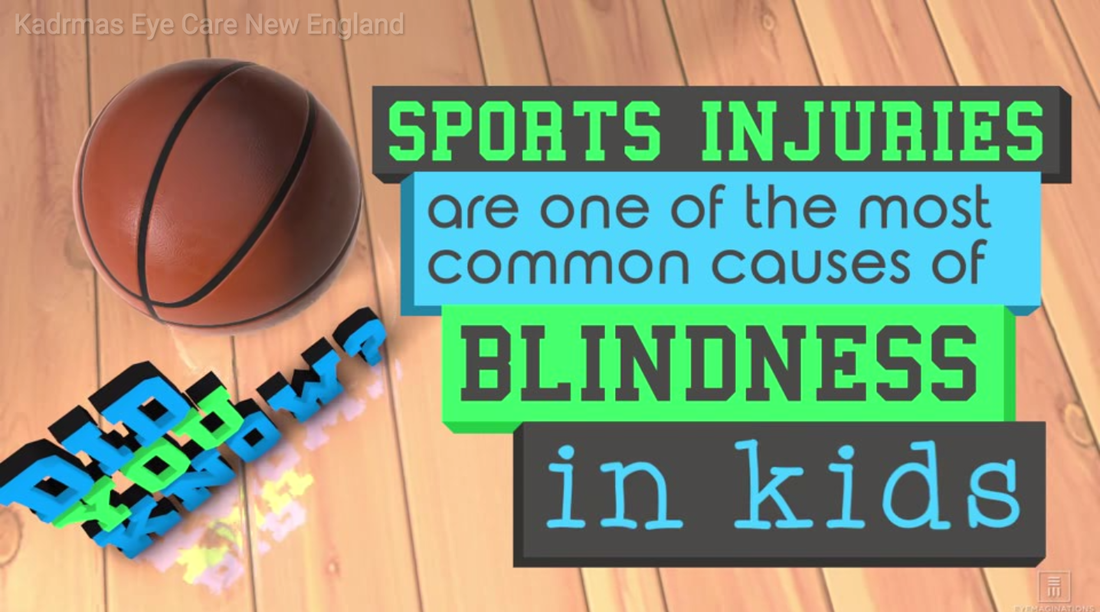But there’s good news! An estimated 90 percent (90%) of all eye injuries are preventable. That’s why it’s so important that we talk about prevention and proper eye protection to keep your child’s eyes safe and vision healthy this Children’s Eye Health & Safety Awareness Month and beyond.
While eye injuries can happen anywhere and anytime – at home, at school, on the playground, in the car, outside, playing sports, games, or with toys, around fireworks, and so on. Indoors and Around the Home Risks to Your Child’s Eye Health and Safety
Injuries can occur from a long list of situations, including:
The list of expected and unexpected dangers could go on and on. The point is not to create an exhaustive list, but to create awareness of the threats lurking for your child and his or her overall health and safety, including eye health and safety. Having an understanding of lingering threats will enable you to find and remove or minimize hazards. It will also help you teach your child about dangers, safety, and precaution and watch to make sure he or she is playing with toys appropriately, doesn’t have access to items within the household that are not age appropriate, and is careful around stairs and furniture. For more detailed tips and information on children’s eye safety, visit the following links:
Sports-Related Eye Injuries & Proper Eye Protection
Tens of thousands of people sustain sports-related eye injuries each year. As we’ve already discussed, more than 40 percent (40%) of those are amongst children ages 14 and younger, and approximately 9 out of 10 of those injuries can be prevented with proper eye protection. So what is proper eye protection? Proper eye protection includes safety goggles / glasses, eye guards, and face shields. The eye protection should be appropriate for the sport. Athletes who wear helmets for their sport, such as baseball, hockey, football and lacrosse players, should have an eye guard or face shield incorporated into the helmet. Athletes who do not wear helmets for their sport, such as basketball, soccer, field hockey, and outfield baseball players, should wear safety goggles / glasses. Regardless of the type protective type of eyewear, it must include lenses made of polycarbonate material, which has a high impact resistance. While polycarbonate lenses are not shatterproof, they do shatter far less easily. Also, sports protective eyewear should be labeled ‘ASTM F803 approved’. Eyewear with that label is performance tested to ensure the highest levels of protection. Certain sports organizations, such as the U.S. Amateur Hockey Association, may have additional regulations and approvals for safety equipment for a particular sport. Further, sports eye guards should be padded and cushioned to prevent or minimize damage to the skin around the eyes should impact occur. Please be aware that regular glasses, including prescription or over-the-counter eyeglasses and sunglasses, do not provide sufficient protection for sports. Their materials and designs will not hold up to impact, and they could cause further injury and more eye damage if they shatter. It is important to speak with your child’s eye doctor and optician about getting the right safety goggles / glasses for your child and his or her particular sports activities. Prescription safety goggles and glasses are available, as are safety goggles and glasses that incorporate UV protection from the sun’s harmful rays. Having an idea of what your child needs before visiting the optical shop can help. Prevent Blindness America offers information on Sports Eye Safety and Recommended Sports Eye Protectors. AAO EyeSmart also offers information on Protective Eyewear, Eye Health in Sports and Recreation, and Sports Eye Injuries by the Numbers. In addition to ensuring your child has the right sports eye protection, it’s important to make sure that your child likes his or her goggles or glasses, finds a good fit for his or her face, and feels comfortable wearing them. If the goggles or glasses end up sitting in a case or in the locker room or don’t fit properly, they will not be able to do their job of protecting your child’s eyes from injury. What to Do and What Not to Do in the Case of an Eye Emergency
Of course, while we can take all of the precautions in the world, accidents happen. If your child does sustain an eye injury, it’s important to know what to do and what not to do. Do the following, depending upon the severity of your child’s eye injury:
DO NOT do the following (or allow your child to do so) in case of an eye emergency:
We understand that should an eye injury occur, you and your child will be scared and in pain. Just remember, the best things you can do to protect your child’s eye(s) from further injury are to stay calm and try to keep your child as calm as possible, get your child immediate medical eye care, and allow the eye doctor to examine your child’s eye and administer the appropriate treatment for his or her injury. Not following these recommendations could lead to further eye damage and vision loss. Preventing eye injury and knowing what to do if something happens can be the key to protecting and preserving your child’s vision. If you have any questions about eye injury prevention and / or sports eye safety, please do not hesitate to contact our office. And if an eye injury does occur, call our office immediately to get your child in to see one of our eye doctors. This wraps up our coverage Children’s Eye Health & Safety Awareness Month 2016. We hope that your child has a wonderful, happy, healthy, and successful school year ahead! Comments are closed.
|
EYE HEALTH BLOGCategories
All
Archives
July 2024
|
|
Kadrmas Eye Care New England
55 Commerce Way, Plymouth, MA 02360
14 Tobey Road, Wareham, MA 02571 133 Falmouth Road (Rt 28), Mashpee, MA 02649 |
Phone Number:
1-508-746-8600 Hours: Monday through Friday — 8 AM – 4:30 PM |


 RSS Feed
RSS Feed
